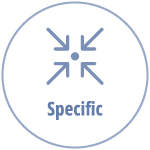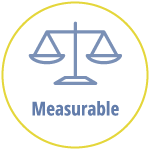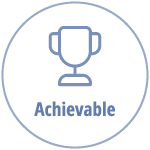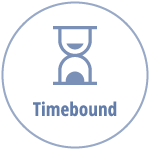While learning outcomes are written at the beginning of the course design process, we also ‘inherit’ existing courses. Well-written learning outcomes keep the students front and center and are SMART:
- Specific – are clearly articulated and concise
- Measurable – can be demonstrated and / or are observable
- Achievable – reflect the level of the course
- Relevant – relate to the ‘real world’
- Timebound – doable within the timeframe of the course





To begin:
- One place to start is to select an action word. Bloom’s Taxonomy and Action Verbs are a good place to begin. For example: Identify, analyze, classify etc. Or take a look at LaFever’s Sample Verbs and Progression.
- Select the subject content to which the action applies. For example: Identify the key steps in conducting an assessment.
- Decide whether the learning outcome needs a level of achievement (e.g., ‘with no mistakes’ or ‘effectively’) and / or a condition of performance (e.g., ‘independently’). For example: Independently [condition] identify [action verb] the correct order [level of achievement] of the key steps in conducting an assessment[subject content]. Not all learning outcomes require this third step.
Classifications of Learning provides different frameworks for (re)writing and (re)designing courses, thinking about learning, application of knowledge, skill development and how to include all learners in the learning experience.
| Keep it simple. Focus on the key learning and move away from thinking about content. It’s also helpful to look at the way learning outcomes are linked to assessment and teaching strategies. For more on this, click on Course Design. |
|
Handouts: |
|
Additional Resources:
|